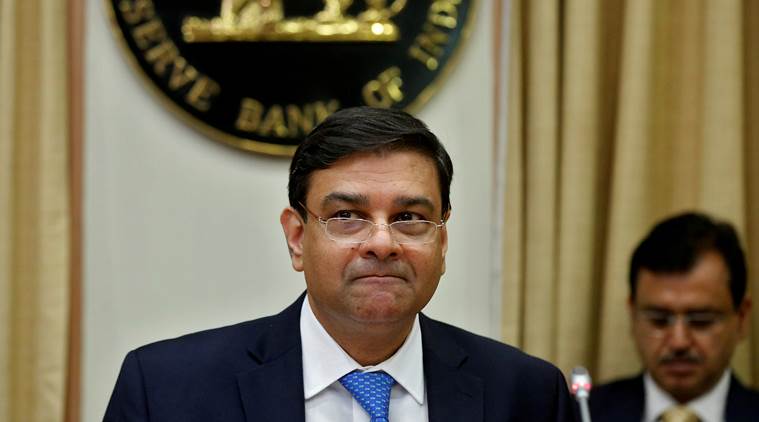RBI warns of persisting inflation risks, projection at 4.6 per cent in Q2
The RBI has now projected inflation at 4.6 per cent in Q2, 4.8 per cent in the second half of 2018-19 and 5.0 per cent in the first quarter of 2019-20, with risks evenly balanced.
 Reserve Bank of India (RBI) Governor Urjit Patel. (REUTERS/File photo)
Reserve Bank of India (RBI) Governor Urjit Patel. (REUTERS/File photo)
The Reserve Bank of India (RBI) on Wednesday said “several risks persist” on the inflation front and forecast a five per cent inflation level in the first quarter of fiscal 2019-20. Though inflation projections for the second quarter have been revised marginally downwards when compared to the RBI’s June statement, projections for the third quarter onwards remain broadly unchanged, it said while hiking the key policy rate — Repo rate —by 25 basis points to 6.50 per cent on Monday.
This is 100 basis points above the RBI’s medium-term target for headline inflation of 4 per cent on a durable basis.
The RBI has now projected inflation at 4.6 per cent in Q2, 4.8 per cent in the second half of 2018-19 and 5.0 per cent in the first quarter of 2019-20, with risks evenly balanced. Excluding the HRA impact, CPI inflation is projected at 4.4 per cent in Q2, 4.7-4.8 per cent in H2 and 5.0 per cent in Q1 of 2019-20.
The sustained and broad-based rise in core inflation — excluding food and fuel — and future upside risks to overall inflation led to the Reserve Bank’s decision to hike the Repo rate, experts said.
Core inflation has been sticky at a four-year high of more than 6 per cent. “By hiking the policy rate, the RBI has reinforced the fact that inflation targeting is and would remain its primary objective and in the process it would not hesitate to act proactively,” said Dr Sunil Kumar Sinha, principal economist, India Ratings and Research.
“Today’s rate hike was largely a pre-emptive move, in anticipation of the upside risks to inflation. Both headline and core inflation have firmed up since the last policy meet. Even though crude oil prices have stabilised in the last few weeks, future remains uncertain,” rating firm Crisil said. Food inflation, which has remained benign so far, faces upside risk from implementation of MSP hikes. Other factors are implementation of Pay Commission hikes at the state level and increased corporate pricing power amid improving demand conditions leading to a greater pass through of the input cost. The latest corporate results do point to improvement in growth/ demand conditions.
According to the RBI, crude oil prices continue to be volatile and vulnerable to both upside and downside risks. In particular, while geopolitical tensions and supply disruptions remain an upside risk to oil prices, the fall in global demand due to further intensification of protectionist trade policies could pull down oil prices. “Volatility in global financial markets continues to impart uncertainty to the inflation outlook. Households’ inflation expectations, as measured by the Reserve Bank’s survey, have risen significantly in the last two rounds, which could influence actual inflation outcomes in the months to come,” it said.
The RBI said manufacturing firms polled in the Reserve Bank’s industrial outlook survey have reported hardening of input price pressures in Q2 of 2018-19. However, if the recent softening of global commodity prices persists, it could mitigate some of the upward pressure on input costs.
- 01
- 02
- 03
- 04
- 05































